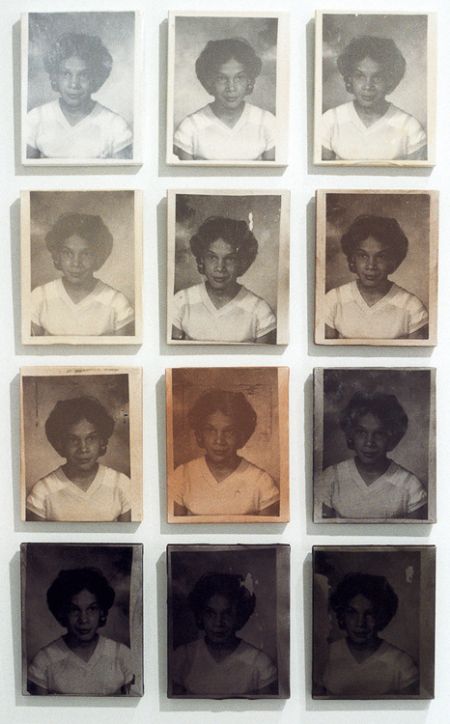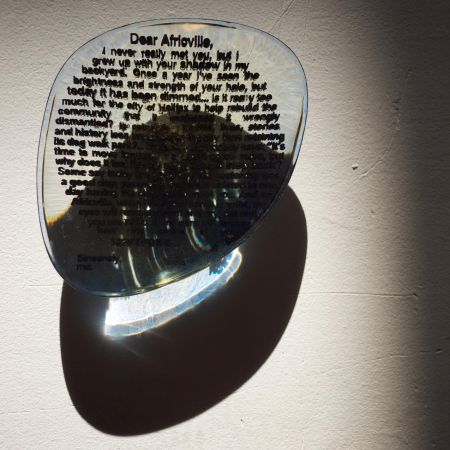Halifax boasts the oldest Black community in Canada. For a distinguished Black art aficionado, the city’s history means it serves as the perfect site to present an exhibit of photographs that probes the diverse experiences of African-Canadians.
“The Black presence in Halifax is profound,” says Kenneth Montague, an Ontario art collector and curator whose works are now displayed, with pieces from African-Nova Scotian artists, at the Canadian Museum of Immigration at Pier 21. “There’s no other place in the country with a more rich or intriguing Black history.”
Many of the 20,000 African-Canadians now living in Nova Scotia proudly trace their ancestry to Blacks who migrated to the province in the late 1780s.
Position As Desired/Exploring African Canadian Identity: Photographs from the Wedge Collection debuted in Toronto in 2010 and was mounted, in Halifax, with the collaboration of local Black leaders.
In addition to works by Ontario and Western Canadian artists, Position As Desired showcases several pieces that chronicle the contours of African-Nova Scotian culture. Consider the arresting black and white portrait of Annapolis Valley resident Kate Guy that was taken, circa 1900, by an unknown photographer. An elderly Black woman, Guy is captured crouching in a field. Her unflinching gaze seems to say to the viewer, “Yeah, I’m still here.”
Fast-forward 60 years to a series of photographs that document daily life in Africville, the historic Black enclave that Halifax officials bulldozed in 1967. Photographer Bob Brooks delivers a delightful image of Black children picking blueberries. Another photo reveals a beaming Black girl, walking happily, with a book in hand. The winning images stand in stark contrast to the denigrating “cauldron of calamity” narrative that enabled city officials to damn Africville as a slum.
Multimedia artist Rebecca Fisk grew up in Mahone Bay. In “Confessions of An Invisible Sister,” she presents 12 identical self-portraits in which her face is shrouded in nylon stockings that range in colour from eggshell to ebony.
“Racism and prejudice based on the hue of one’s skin is both ridiculous and infantile,” Fisk declares in her artist statement.
A graduate of the Nova Scotia College of Art and Design, Buseje Bailey “tattoos” with sentence fragments the naked upper body of a Black woman in her disarming photo “Explain Black.”
Taking a page from the epistolary tradition, Halifax native Shyronn Smardon pens a letter to the memory of Africville in his poignant offering “Puddle of Teardrops.” An excerpt from the letter reads:
“Is it really too much for the city of Halifax to return you to your former glory and help to rebuild the community it itself confessed it wrongly dismantled? … Until you are rebuilt, my ears will forever hear the sound of your tear drops.”
Then, in a majestic move that evokes the collage work of Romare Bearden and the surrealism of Salvador Dali, Smardon “floats” the text of the letter in a black tear-shaped dish.
“For me, the story of Africville is just as relevant now as it was in the 60s,” Smardon wrote in an email to the Halifax Media Co-op. “The land continues to remain vacant … It’s important that the story doesn’t disappear under a carpet of an uninterested land developer. Returning homes to Africville is still very achievable.”
Royal Canadian Mounted Police officer Christine Hobin was among the local Black leaders that helped to plan Position As Desired. For her, the exhibit celebrates the perseverance of all people of African descent.
“What we have in common is our shared African ancestry,” Hobin said. “The show highlights our determined spirits, and the fact that many of us have not only survived but thrived despite racism.”
Position as Desired is showing at the Canadian Museum of Immigration at Pier 21 until March 30.





